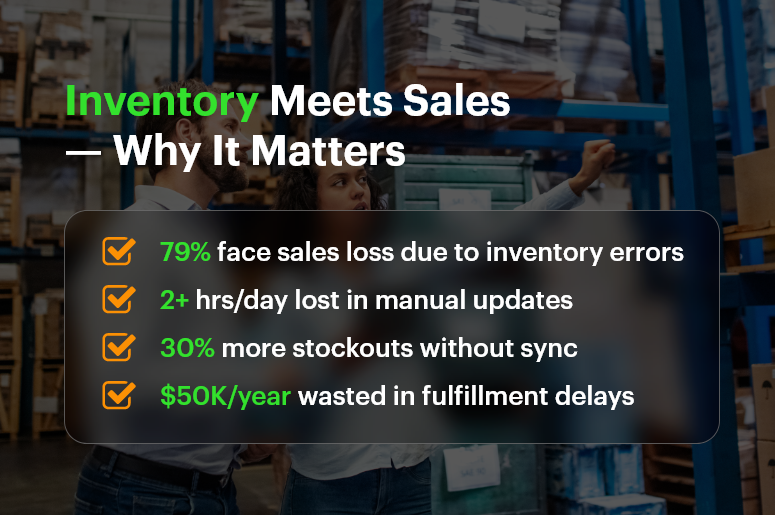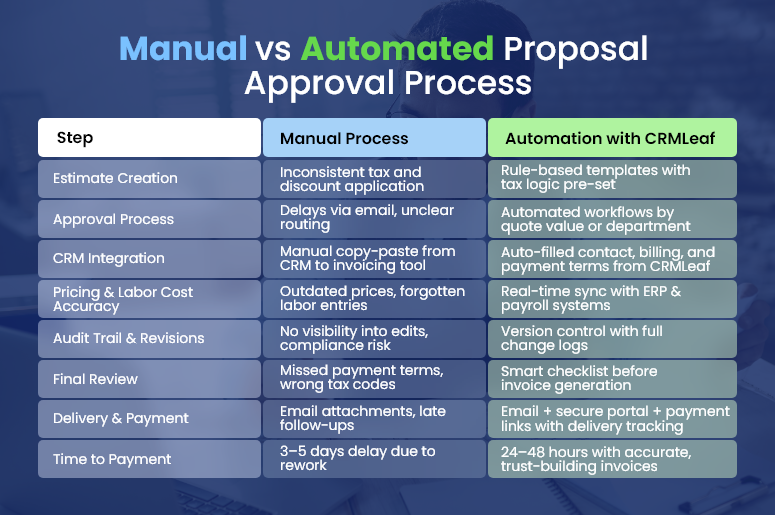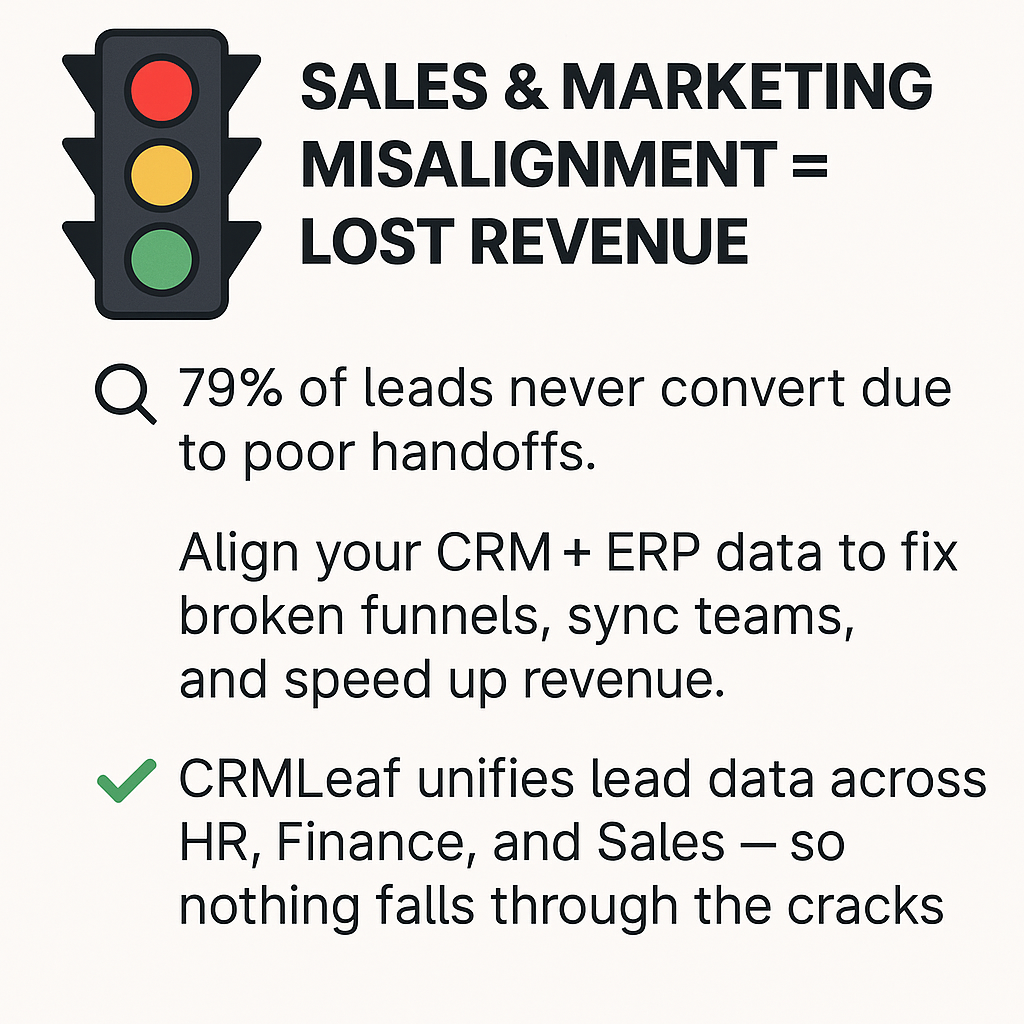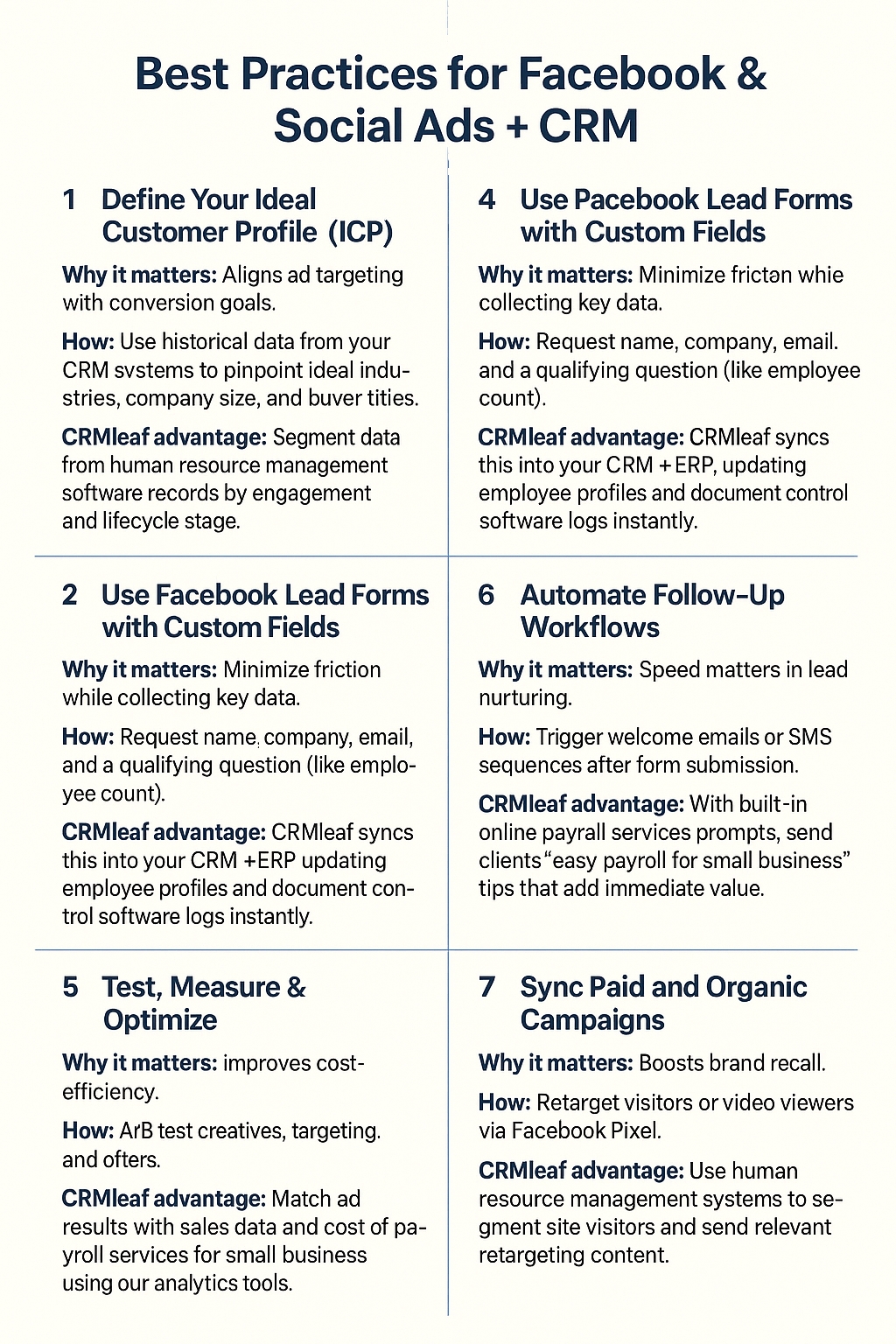In today’s ultra-competitive market, 79% of mid-sized businesses cite inventory inaccuracies as a top barrier to sales growth. If your sales team promises stock you don’t actually have, you risk customer churn, lost revenue, and tarnished reputation. That’s why connecting inventory to your sales pipeline is more than an operational nice-to-have — it’s a strategic imperative.
In this post, you’ll learn how integrating your stock levels, order management, and customer data within one unified customer relationship management software platform drives efficiency, boosts sales velocity, and empowers every department — from operations to finance — to make informed decisions. Let’s dive in.
Business Need & Importance
Growing businesses often juggle multiple platforms: a standalone inventory tool, disconnected CRM systems, and maybe third-party payroll services for small businesses. This fractured setup creates data silos, manual re-entry, and blind spots:
- Preventing Stockouts & Backorders: If sales reps can’t see real-time inventory, they overpromise to customers. Stockouts lead to expedited shipping costs, angry clients, and wasted marketing spend.
- Reducing Manual Errors: Transcribing numbers between an online payroll services provider, a separate inventory spreadsheet, and your customer relationship management tool invites human error — leading to incorrect invoices or missed shipments.
- Enabling Smarter Forecasting: Linking historical sales, live stock levels, and customer demand patterns in your customer relationship management software allows finance leaders to predict reorder points, balance payroll services near me, and optimize cash flow.
Industries like retail, manufacturing, and wholesale distribution especially benefit.
For example:
- A retail chain avoids deadstock by aligning replenishment with sales promotions.
- A contract manufacturer syncs custom part levels with client orders, reducing rush-order fees.
- A food distributor tracks perishable inventory to lower spoilage and guarantee freshness.
Connecting inventory and sales pipelines within a unified CRM + ERP is no longer optional — it’s how ambitious small and mid-sized businesses seize growth opportunities and stay competitive.

Best Practices & Actionable Tips
Connecting inventory and your customer relationship management software hinges on careful planning, streamlined workflows, and the right technology partner. Here’s how to get started:
Audit Your Current Workflows
- Map every step from purchase order to shipment. Identify manual data handoffs, duplicate entries, and reconciliation tasks.
- Highlight where your human resource management software, attendance software, or all in one HR software ties back into operations — such as labor costs in order fulfillment.
- Pinpoint KPIs you need: stock-out rate, order processing time, and inventory turnover.
Define Clear Data Ownership
- Assign team members who “own” data in document management, employee profiles, and document control software modules.
- Ensure sales, warehouse, and finance each understand their input responsibilities.
- Create data validation rules to catch anomalies — like negative stock or duplicate customer records.
Choose the Right Integration Approach
- Native Integration: Use a combined CRM + ERP like CRMLeaf for real-time sync without custom code.
- API-First: If you must connect legacy systems, select platforms that offer robust RESTful APIs.
- Middleware: Employ an iPaaS (integration platform) only if you already have multiple specialized tools.
Automate Key Processes
- Auto-reserve inventory when a quote turns into an order, preventing double-selling.
- Trigger reorder alerts based on minimum stock thresholds tied to sales pipeline velocity.
- Sync shipping confirmations back to your CRM systems so customer service reps can update employee profiles and track deliveries.
Establish Continuous Monitoring
- Set up dashboards that combine unshipped orders, location-based stock levels, and upcoming promotions.
- Leverage alerts when inventory dips below safety stock or when sales orders spike unexpectedly.
- Integrate with online payroll services for small businesses to forecast labor needs during peak fulfillment periods.
Train Cross-Functional Teams
- Conduct workshops where sales sees inventory live, and operations understands sales forecasts.
- Show finance leaders how integrated data reduces the cost of payroll services for small business by optimizing staffing.
- Develop an internal “champion” in both your human resource management systems and warehouse teams to ensure ongoing adoption.
By following these best practices, you’ll leave behind the frustrations of standalone tools — like juggling payroll services for one employee at month-end or reconciling separate document management system records — and move toward a frictionless operation.
Customer Success
For example, Apex Retailers, a mid-sized fashion chain, used CRMLeaf for connecting inventory to achieve remarkable results::
- 30% Reduction in Stockouts: With live inventory linked to CRM systems, sales reps no longer overcommit.
- 25% Faster Order Processing: Automated reservation and fulfillment cut manual data entry and accelerated shipping.
- $50K Annual Savings: By optimizing labor via integrated online payroll services, Apex trimmed overtime costs during peak seasons.
Here’s how they did it: After a two-week implementation, Apex trained their sales, warehouse, and HR teams on the unified platform. They replaced clunky spreadsheets with CRMLeaf’s dashboards, synced purchase orders automatically, and linked labor costs from their best payroll service directly to order line items.
Key Takeaways & Closing
- Connecting inventory with your sales pipeline eliminates data silos, reduces manual errors, and speeds up order fulfillment.
- A unified customer relationship management software + ERP platform empowers teams across sales, HR, and finance with a single source of truth.
- Adopting best practices — like automated reordering, clear data ownership, and cross-functional training — translates to real savings and happier customers.
Ready to transform your operations and drive revenue growth? A more connected, transparent workflow starts here.










